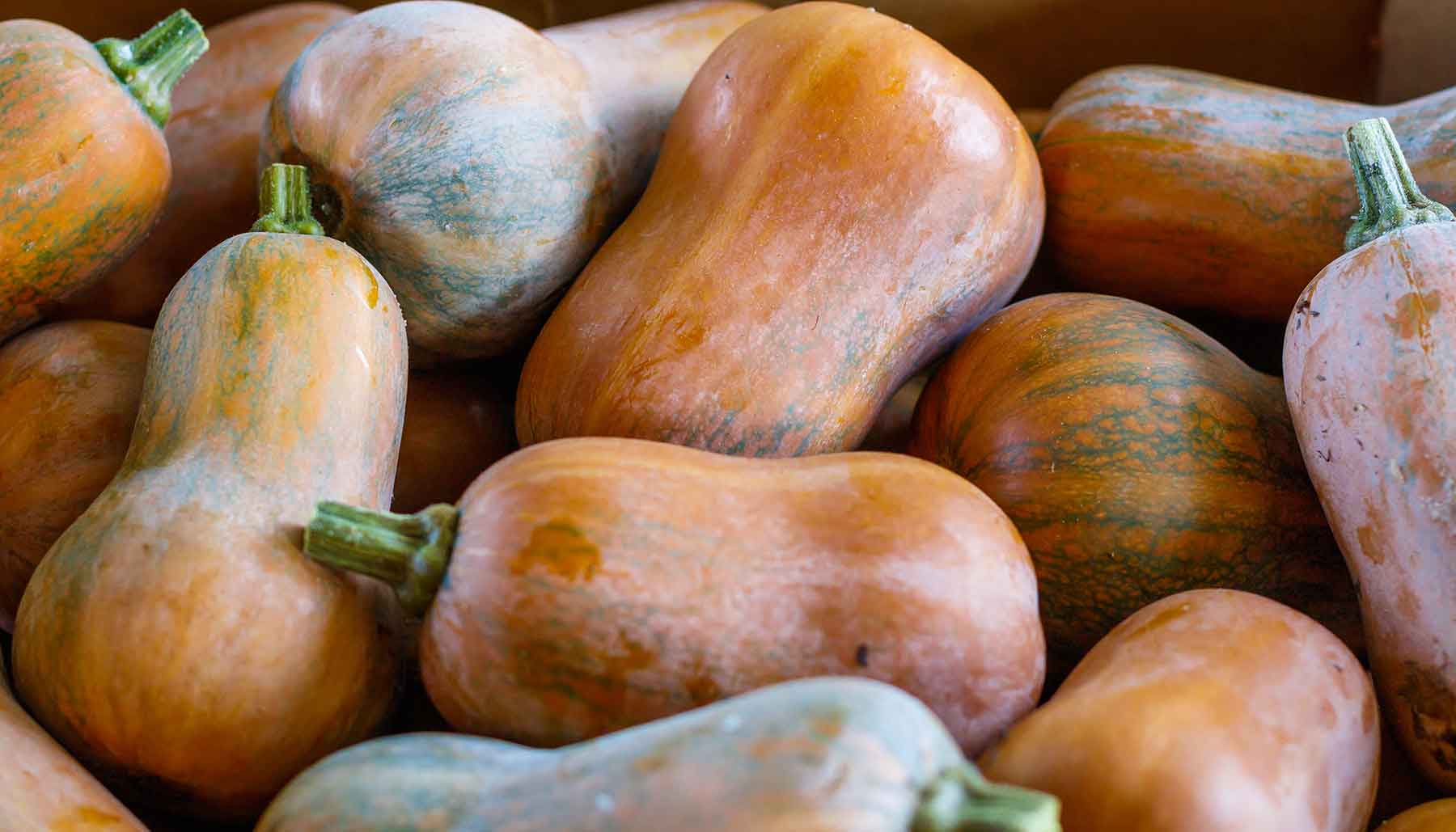Even the slightest chill in the air has everyone running for pumpkin everything. And while pumpkins might be the star of fall, it’s only one variety of winter squash. Perhaps it’s time to expand your cool weather veggie selection!
Winter squash includes several different species, and they come in all kinds of colors, shapes, and sizes. They sure are pretty!
While we call them winter squash, they are actually in season starting with the fall. You’ll likely start to see them appear in stores and farmers markets around September or so. So where do they get that name? Well, these hardy veggies usually have a pretty thick skin. That tough exterior helps them last well into the winter months. You don’t even need to refrigerate them to keep them around!
Of course, their extended shelf life isn’t the only reason why people buy winter squash. They are wonderful in all kinds of recipes, from soups to breads, and even desserts. Sauteed and pureed, roasted and steamed, these different varieties of squash are really versatile and can be cooked in so many different ways.
If you’re not the world’s biggest winter squash expert, fear not – I’m here for Winter Squash 101!
How to Pick a Good Winter Squash
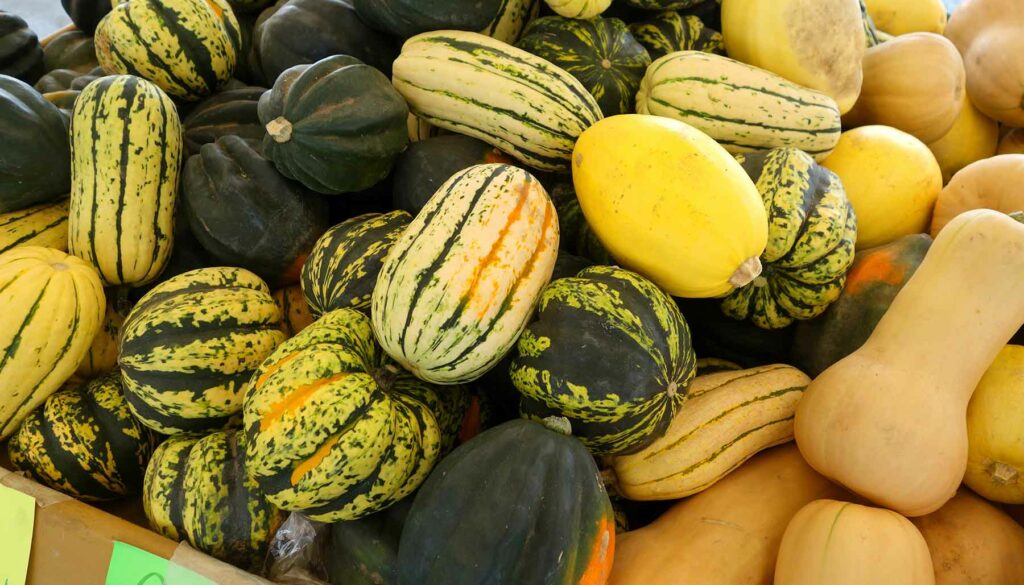
First things first: how do you know which squash to purchase? Unlike some other kinds of produce, you can’t really test a winter squash’s ripeness by touch. The tough exterior is what helps a squash last for so long, but it also prevents you from feeling how soft the inside might be.
Instead, we just rely on looks and weight. You want one that doesn’t have soft spots, bruises, or mold. All of these are signs that the squash has begun to perish. Or in the case of mold, it probably already has!
Keep in mind that a squash’s size can be deceiving, too. You want to choose a squash that feels heavy for its size. A squash can look huge, but be pretty hollow inside, and that means it will yield much less flesh than a solid squash.
How to Store Your Winter Squash
Now that you’ve found that dense, heavy, unblemished squash, it’s time to bring it home!
As I mentioned, winter squash is known for sticking around. If stored correctly, a winter squash might keep for weeks or even months, depending on the variety.
You will want to keep your winter squash in a cool, dry place. Back when most people had root cellars for storage, this is where they would put their squash after harvest. Thanks to modern food distribution and refrigeration, you probably don’t use a root cellar. Instead, choose a cool and dark shelf in the pantry, or maybe in the cabinet. Just don’t put your squash in the fridge. The ideal temp is around 50 degrees F, so the fridge is too chilly and too humid for them. Besides, storing squash in the fridge could affect the texture.
Some varieties of squash with thin skin won’t store as long as others. For instance, delicata squash will last for around six weeks. That might be longer than, say, a tomato, but it’s relatively short when compared to other varieties of winter squash. In contrast, a butternut or kabocha squash will keep for a few months under the right conditions.
Cut squash can be stored in a tightly covered container in the fridge for up to five days. If you need it to last longer, you can freeze it for up to six months.
Winter Squash Varieties
Now that you know how to pick a winter squash and how to store it properly, let’s talk about all the squash out there. There are many different kinds of winter squash, but these are the ones you are most likely to come across.
Butternut Squash

Butternut squash can be up to a foot long. It has a long, thick neck with a bulbous bottom. Although the smooth, light tan rind is technically edible, it can be really tough so it’s best to remove it. Inside, you’ll find a sweet, nutty-tasting flesh that is pretty versatile. When stored properly, a butternut squash will generally keep for three months, but some can keep for up to six months.
Acorn Squash

Acorn squash are around the size of a grapefruit or a little larger, usually ranging from four to seven inches long. As you can guess from the name, they’re kind of shaped like an acorn, but with ridges. The rind is incredibly tough – but once you get past it, you’ll find a sweet-tasting golden-colored flesh. If you have a hard time peeling acorn squash, try cooking it with the skin on because it easily separates from the flesh after cooking.
Pumpkin
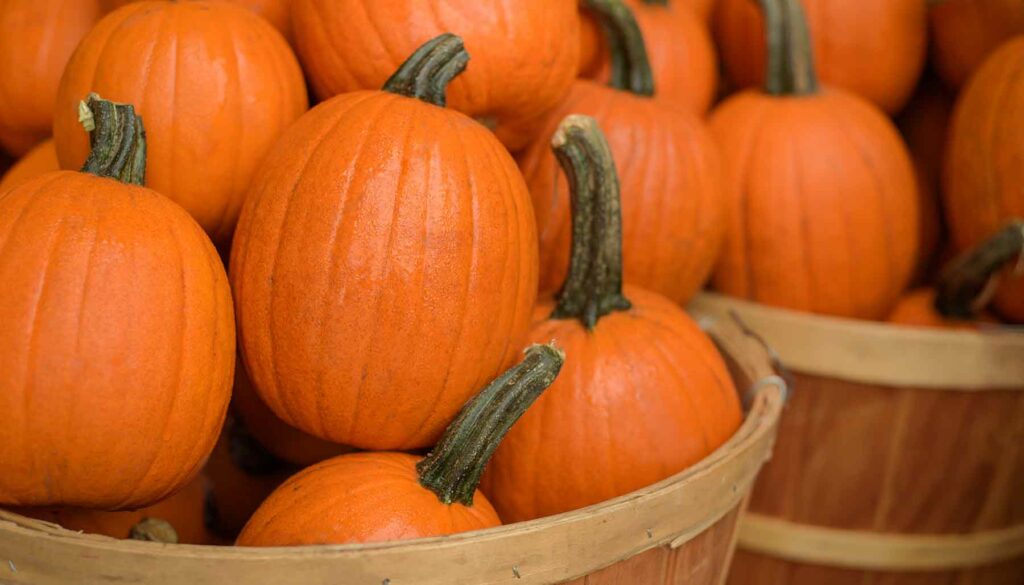
There are tons of variety when it comes to pumpkins, and they’re not all the same when it comes to eating. Those giant pumpkins used for carving are best skipped because you’ll find them bland and watery (but roast the seeds for a tasty treat!). Smaller, denser varieties are what you’re looking for, like a sugar pumpkin or a cheese pumpkin. These are the ones you want to create fresh pumpkin pies, roasted pumpkin soup, and other pumpkin goodies.
Related: Delicious Things to Do With All Those Pumpkin Seeds
Spaghetti Squash

The humble spaghetti squash gained a lot of popularity in recent years, thanks to people looking to avoid pasta. That’s because when cooked, the inside forms pasta-like strings. You could call it a pasta im-pasta! Their bland flavor doesn’t really overtake other ingredients. On the outside, it’s oblong and almost football-sized, with a yellow rind. These are best when baked or boiled until tender, and the flesh is extracted with a fork to keep it stringy.
Delicata Squash
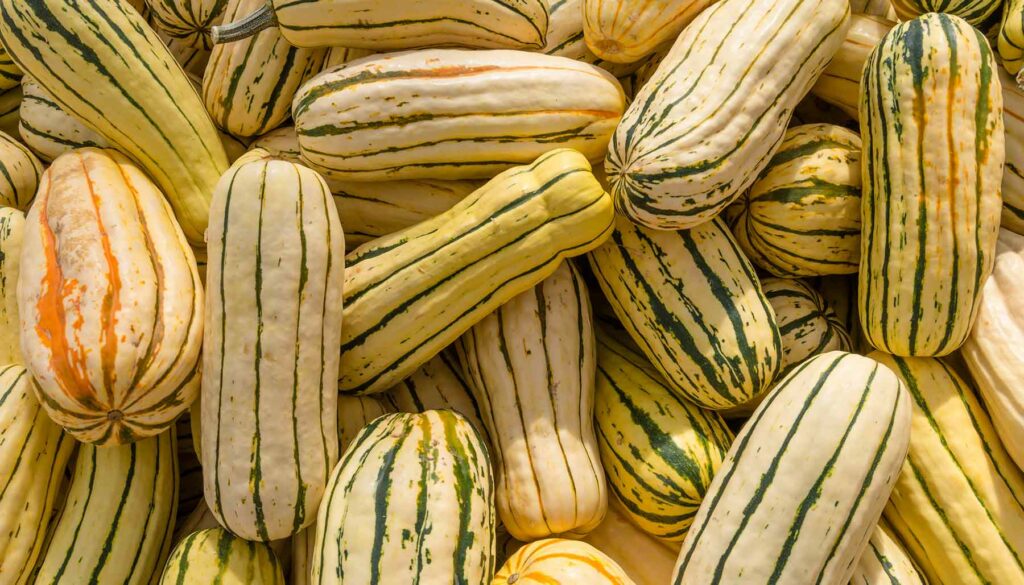
The delicata squash is oblong, with pretty green streaks on its pale rind. They are smaller than most other winter squash varieties. Its name hints at this squash’s thin, delicate skin, which is edible. That means you don’t have to go through the trouble of peeling it before cooking with it. It also means that it won’t last as long, though, only keeping for a few weeks. Sometimes called a sweet potato squash, you can probably guess that it features a mild sweet potato-esque flavor.
Buttercup Squash
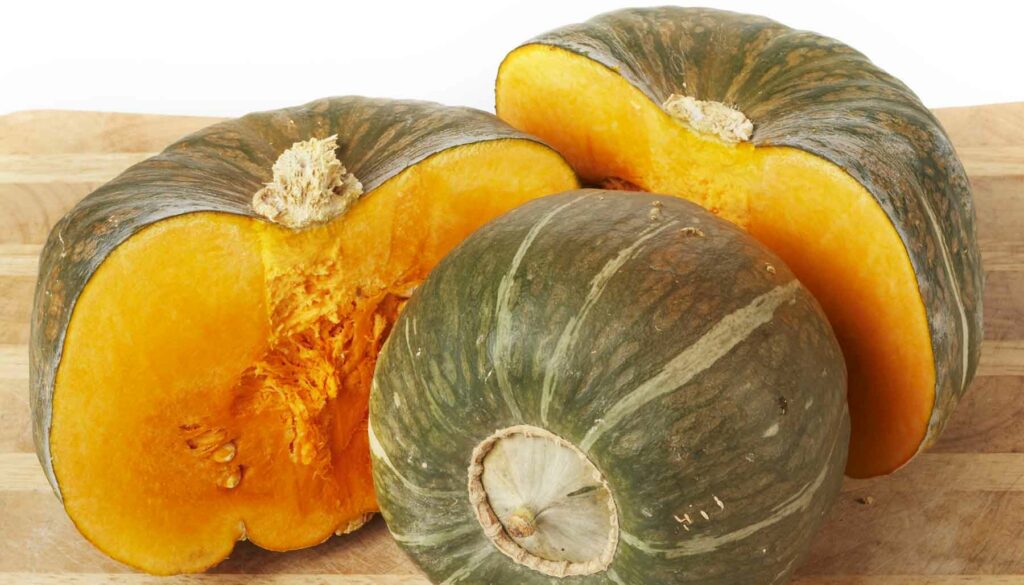
Buttercups are squat, kind of like acorn squash, but without such deep ridges. Thanks to the thick dark green skin with specks of color, a buttercup squash will keep for around three months in the right conditions. The flesh is firm and dense. Taste-wise, the flesh is sweet and creamy and is usually considered sweeter than other winter squash varieties. Both the taste and texture are similar to sweet potatoes.
Honeynut Squash
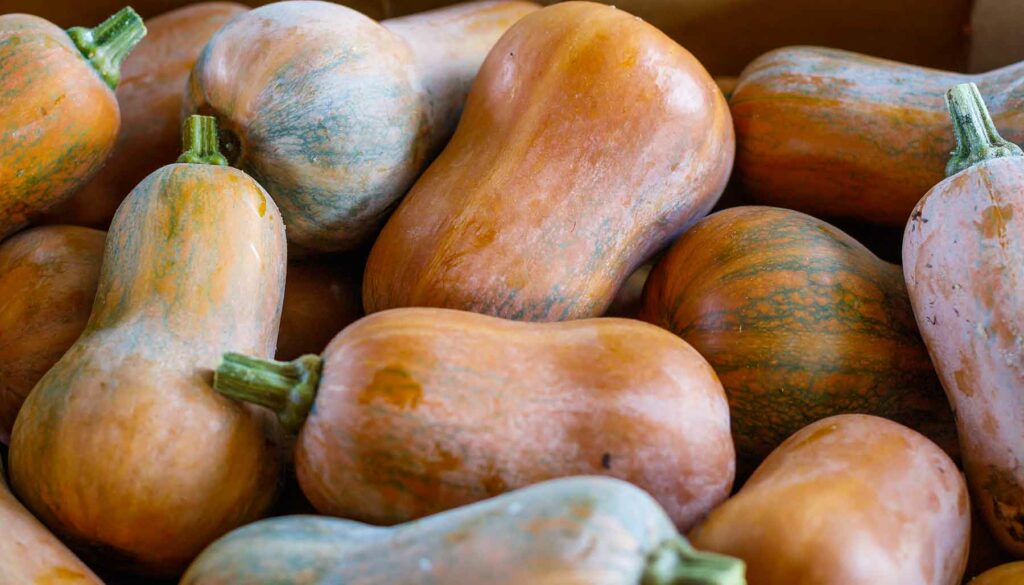
The honeynut squash is a relatively new hybrid variety, created from buttercup and butternut squash. Although it has the same shape as butternut squash, it’s a lot smaller and has a darker color to its smooth skin. Inside, it is much sweeter than the butternut and is a great choice for dessert applications. Although you can use this one in many different ways, simply roasting it with a bit of salt and olive oil is delightful.
Kabocha Squash
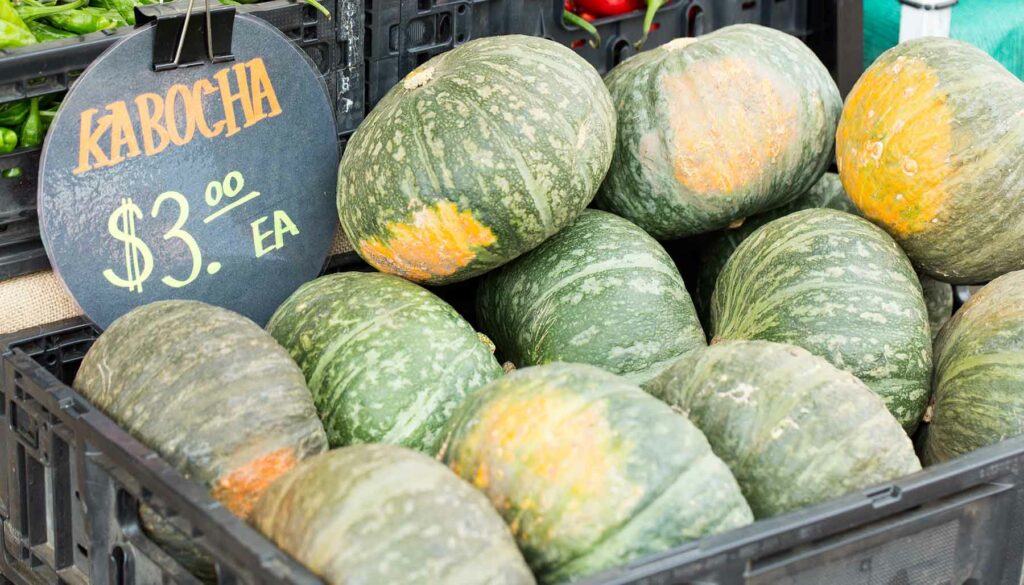
This Japanese variety is plump, and around the size of a cantaloupe. It is sometimes called a Japanese pumpkin. The skin is green with a dull finish, and although it can look tough, it is edible when cooked. The flesh inside can be starchy, but longer cook times can remedy this. You’ll find it sweet with a nice nutty flavor, and the texture is somewhere between a sweet potato and pumpkin.
Preparing Winter Squash
When it comes to cooking winter squash, the methods are about as varied as the squash themselves!
I think most winter squash is best roasted, but that’s just my opinion. A long roasting at lower heat will concentrate the squash’s lovely flavor. It evaporates moisture, turns all those complex carbs into sugars, and then caramelizes those sugars into sweet squash-y goodness. All you need is some oil and a little salt.
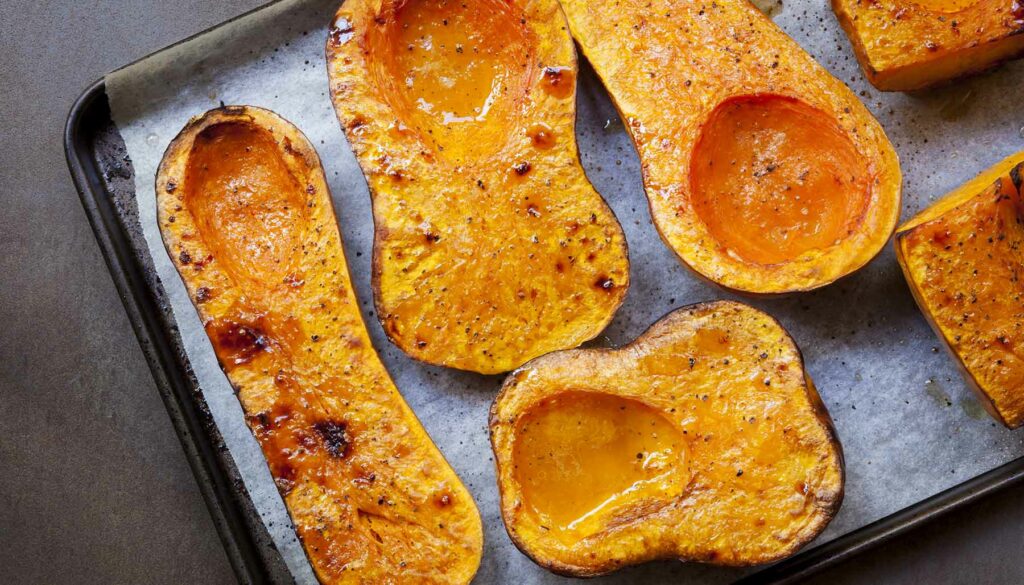
For help roasting winter squash, check out this recipe: How to Roast Winter Squash.
To take that roasting up a notch, try stuffing it! This works especially well with acorn squash, but other varieties will do just fine, too. The inherent sweet flavors of winter squash will pair wonderfully with a savory stuffing.
Check out this recipe for Roasted Stuffed Winter Squash.
Of course, winter squash can also be steamed, simmered, sauteed, pureed, and even thrown in the pressure cooker. Nothing hits the spot in colder months quite like a Roasted Butternut Squash Soup. Pumpkin or butternut squash can also become the star of your next party spread, thanks to this delectable Pumpkin and Pesto Crostini recipe. Or, wow your friends and family at the next holiday gathering with this Butternut Squash Bake with Cranberries and Apples.
As you can see, the possibilities are endless with these versatile veggies!


